
The Max Planck Society for the Advancement of Science is a formally independent non-governmental and non-profit association of German research institutes. Founded in 1911 as the Kaiser Wilhelm Society, it was renamed to the Max Planck Society in 1948 in honor of its former president, theoretical physicist Max Planck. The society is funded by the federal and state governments of Germany.

The Max Planck Institute for Astrophysics (MPA) is a research institute located in Garching, just north of Munich, Bavaria, Germany. It is one of many scientific research institutes belonging to the Max Planck Society.
The Max Planck Institute for Extraterrestrial Physics is part of the Max Planck Society, located in Garching, near Munich, Germany. In 1991 the Max Planck Institute for Physics and Astrophysics split up into the Max Planck Institute for Extraterrestrial Physics, the Max Planck Institute for Physics and the Max Planck Institute for Astrophysics. The Max Planck Institute for Extraterrestrial Physics was founded as sub-institute in 1963. The scientific activities of the institute are mostly devoted to astrophysics with telescopes orbiting in space. A large amount of the resources are spent for studying black holes in the Milky Way Galaxy and in the remote universe.

Venkataraman Radhakrishnan was an Indian space scientist and Royal Swedish Academy of Sciences member. He retired from his career as professor emeritus of the Raman Research Institute in Bangalore, India, of which he had previously been director from 1972 to 1994 and which is named after his father. He served on various committees in various capacities including as the vice president of the International Astronomical Union during 1988–1994. He was also a Foreign Fellow of the Royal Swedish Academy of Sciences and the U.S. National Academy of Sciences. He was an Associate of the Royal Astronomical Society and a Fellow of the Indian Academy of Sciences, Bangalore.

Institut de Radioastronomie Millimetrique (IRAM) is an international research institute and Europe's leading center for radio astronomy at millimeter wavelengths. Its mission is to explore the universe, study its origins and its evolution with two of the most advanced radio facilities in the world:

The Max Planck Institute for Gravitational Physics is a Max Planck Institute whose research is aimed at investigating Einstein's theory of relativity and beyond: Mathematics, quantum gravity, astrophysical relativity, and gravitational-wave astronomy. The institute was founded in 1995 and is located in the Potsdam Science Park in Golm, Potsdam and in Hannover where it closely collaborates with the Leibniz University Hannover. Both the Potsdam and the Hannover parts of the institute are organized in three research departments and host a number of independent research groups.
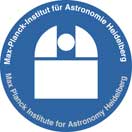
The Max-Planck-Institut für Astronomie is a research institute of the Max Planck Society (MPG). It is located in Heidelberg, Baden-Württemberg, Germany near the top of the Königstuhl, adjacent to the historic Landessternwarte Heidelberg-Königstuhl astronomical observatory. The institute primarily conducts basic research in the natural sciences in the field of astronomy.
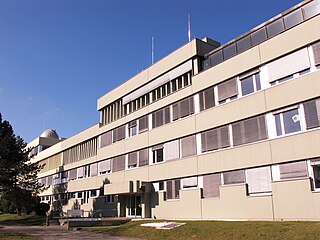
The Max Planck Institute for Radio Astronomy (MPIfRA) (German: Max-Planck-Institut für Radioastronomie) is located in Bonn, Germany. It is one of 80 institutes in the Max Planck Society (German: Max-Planck-Gesellschaft). 50°43′47.6″N7°4′9.2″E
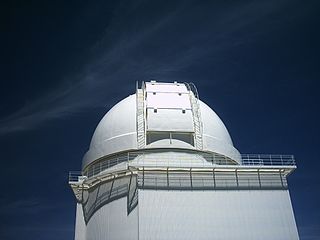
The Institute of Astrophysics of Andalusia is a research institute funded by the High Council of Scientific Research of the Spanish government Consejo Superior de Investigaciones Científicas (CSIC), and is located in Granada, Andalusia, Spain. IAA activities are related to research in the field of astrophysics, and instrument development both for ground-based telescopes and for space missions. Scientific research at the Institute covers the Solar System, star formation, stellar structure and evolution, galaxy formation and evolution and cosmology. The IAA was created as a CSIC research institute in July 1975. Presently, the IAA operates the Sierra Nevada Observatory, and the Calar Alto Observatory.
Nicholas Zabriskie "Nick" Scoville is the Francis L. Moseley Professor of Astronomy at Caltech.

Harald Lesch is a German physicist, astronomer, natural philosopher, author, television presenter, professor of physics at the Ludwig Maximilian University of Munich (LMU) and professor of natural philosophy at the Munich University of Philosophy.

Pushchino Radio Astronomy Observatory is a Russian radio astronomy observatory. It was developed by Lebedev Physical Institute (LPI), Russian Academy of Sciences within a span of twenty years. It was founded on April 11, 1956, and currently occupies 70 000 square meters.
Sebastian Florian Hönig is a German astronomer, Professor of Observational & Computational Astrophysics in the astronomy group of the University of Southampton School of Physics & Astronomy, and discoverer of minor planets and comets.
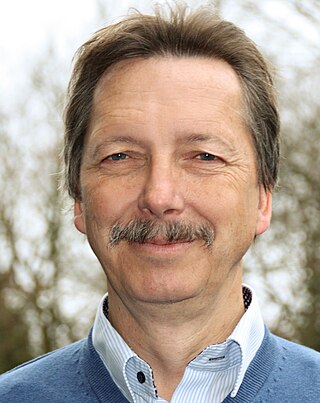
Thomas K. Henning is a German astrophysicist. He was a director at the Max Planck Institute for Astronomy between 2001 and 2024. Henning is an expert in the field of star and planet formation.
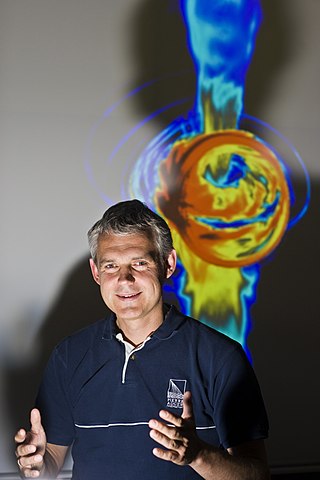
Heino Falcke is a German professor of radio astronomy and astroparticle physics at the Radboud University Nijmegen (Netherlands). His main field of study is black holes, and he is the originator of the concept of the 'black hole shadow'. In 2019, Falcke announced the first Event Horizon Telescope results at the EHT Press Conference in Brussels.
Norbert Bartel is a Canadian physicist and astronomer, currently a Distinguished Research Professor at York University.

Violette Impellizzeri is an Italian astronomer and astrophysicist specializing in active galactic nuclei (AGN) and molecular clouds surrounding supermassive black holes. She is currently a university professor at Leiden University, where she conducts research on these objects using radio interferometry.

Johann Anton Zensus is a German radio astronomer. He is director at the Max Planck Institute for Radio Astronomy (MPIfR) and honorary professor at the University of Cologne. He is chairman of the collaboration board of the Event Horizon Telescope (EHT). The collaboration announced the first image of a black hole in April 2019.
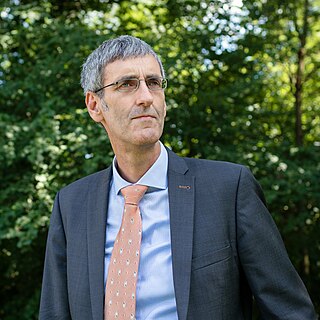
Frank Eisenhauer is a German astronomer and astrophysicist, a director of the Max Planck Institute for Extraterrestrial Physics (MPE), and a professor at Technical University of Munich. He is best known for his contributions to interferometry and spectroscopy and the study of the black hole at the centre of the Milky Way.
Thushara Pillai is an Indian astrophysicist and astronomer with a senior research scientist position at Boston University's Institute for Astrophysical Research and MIT Haystack Observatory. Her research interests have included molecular clouds, high-mass star formation, magnetic fields, astrochemistry, and the Galactic Center. She is known for her work that looked to understand star formation by observing magnetized interstellar clouds, and Pillai is the first astronomer to capture images of magnetic fields reorienting near areas of star formation.